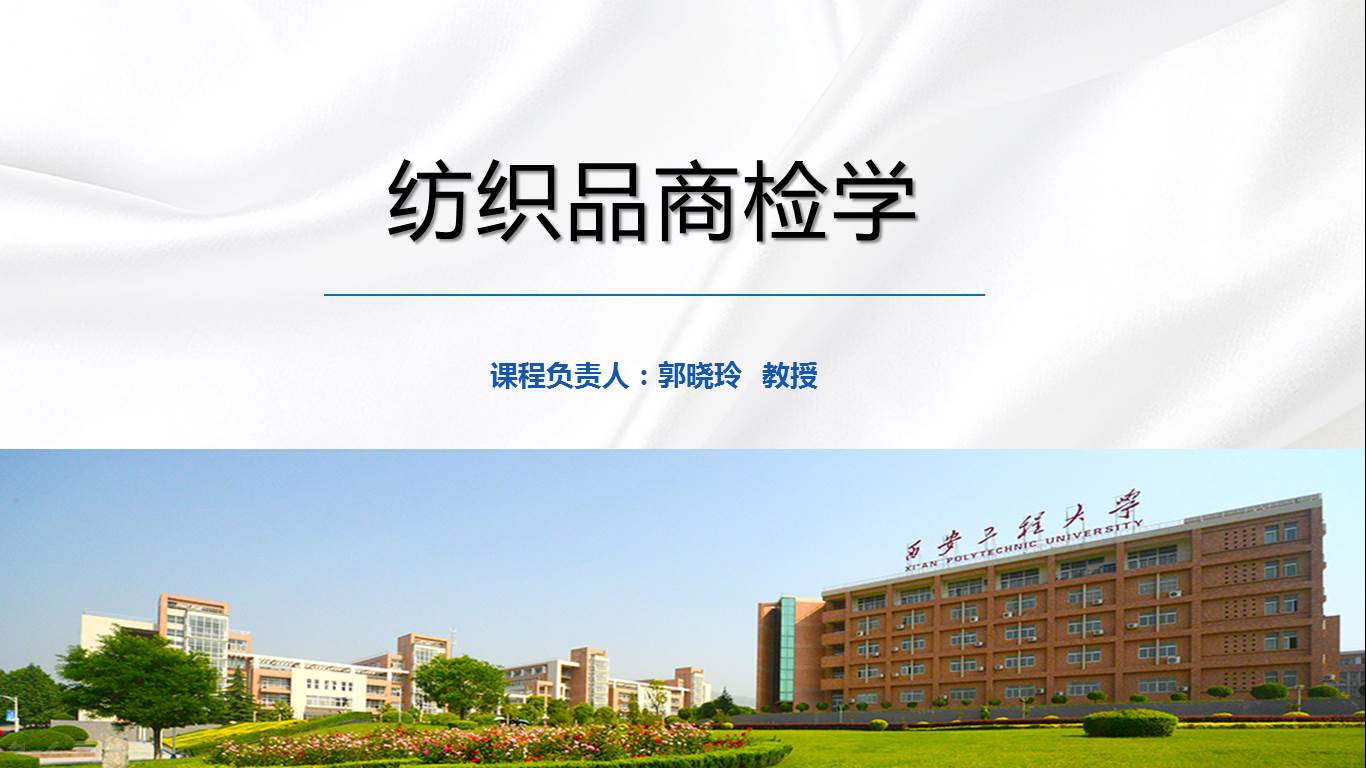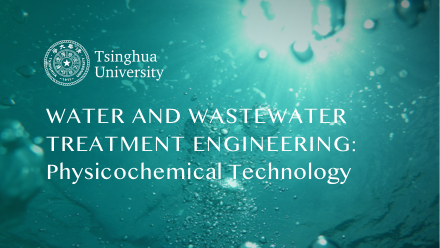
当前课程知识点:Water and Wastewater Treatment Engineering: Physicochemical Technology > Chapter 2 Sedimentation and clarification > 2-3 Flocculent settling > 2-3 Flocculent settling
返回《Water and Wastewater Treatment Engineering: Physicochemical Technology》慕课在线视频课程列表
返回《Water and Wastewater Treatment Engineering: Physicochemical Technology》慕课在线视频列表
同学们好,在这一讲我们继续介绍介绍沉淀与澄清的第3节絮凝沉淀
在前面我们介绍过,当原水中含有的悬浮颗粒具有絮凝性时
可能就会发生絮凝沉淀
如投加混凝剂后形成的矾花的沉淀
还有二级生物处理中活性污泥的沉淀等,都是属于絮凝沉淀
由于在沉淀过程中颗粒会相互碰撞絮凝,使颗粒尺寸变大
因此颗粒沉速随沉淀柱深度而增加
如这个图所示,颗粒的沉淀轨迹是一条曲线
而在上一节介绍的离散型颗粒的自由沉淀轨迹是一条直线
对于这样一个颗粒的大小和沉速都在变化的沉淀过程
我们就很难像自由沉淀那样,采用理论公式来计算颗粒沉速
那怎么办呢?我们可以通过沉淀实验来进行测定
下面我们就来介绍一下,絮凝性颗粒的沉淀实验是如何进行的
在絮凝沉淀实验中,我们仍然采用沉淀柱实验装置
沉淀柱的有效高度为H,在沉淀柱不同高度上,设有多个取样口
在这里需要注意的是
在絮凝沉淀中采用的沉淀柱的高度应与实际沉淀池的深度一致
在沉淀前,先将原水打到沉淀柱里,充分搅拌
测定初始悬浮物浓度为C0,然后开始沉淀实验
每隔一段时间,同时从不同深度的取样口取样,并测定悬浮物浓度C
然后计算沉淀柱各深度处的颗粒去除百分数,以p来表示
以沉淀柱取样口高度h为纵坐标,沉淀时间t为横坐标
将各个深度处的颗粒去除百分数p的数据绘于图中
在有足够的数据点后,将去除百分数相同的各点连成光滑曲线
我们就得到"去除百分数等值线",如这个图所示,如p1,p2,p3,p4,p5,p6
这些曲线分别代表了在这些曲线上颗粒的去除百分数是相等的
"去除百分数等值线"的物理意义是什么呢?
对于某一去除百分数等值线来说
它代表了对应这一去除百分数时,颗粒沉淀路线的最远轨迹
深度与时间的比值为相应于该去除百分数时颗粒的最小平均沉速
如果我们要求某一沉淀时间时颗粒的总去除率,该如何计算呢?
我们可以参考类似自由沉淀的办法来进行计算
比如我们想求图中t0时的颗粒总去除率
为方便起见,假设沉淀时间t0正好是p2曲线与横坐标相交处
首先计算t0时刻的颗粒沉速u0,等于沉淀柱有效水深H除以t0
根据前面的自由沉淀中颗粒去除率的计算方法
凡沉速大于等于u0的颗粒全部被去除
在这里,这部分颗粒的去除百分数等于p2
而沉速小于u0的颗粒,将按照该颗粒的u与u0的比值仅部分去除
这部分去除率该如何计算呢?我们可以分段进行计算
相邻两条去除百分数等值曲线所代表的数值之间的差值
反映出同一时间不同深度的颗粒去除百分数的差异
说明有一部分颗粒对于上面一条曲线而言,被认为已沉淀下去
而对下面一条曲线而言,则被认为尚未沉淀下去
介于这两条曲线之间的这部分颗粒的数量,为这两条曲线所表示的数值之差
其平均沉速等于其平均高度除以沉淀时间t0
这样,我们可以计算p2到p3之间的这部分的颗粒的部分去除百分数
等于该颗粒沉速即h1/t0,与颗粒沉速u0的比值,再乘以这部分颗粒的数量p3-p2
以此类推,我们可以计算p3到p4、p4到p5、p5到p6之间
等各段的颗粒的部分去除百分数
这样我们就可以得到某一沉淀时间t0时颗粒的总去除率
我们进一步改变沉淀时间,计算相应的颗粒沉速
再按刚才的步骤计算颗粒总去除率
最后就可以得到颗粒总去除率和颗粒沉速、沉淀时间的关系曲线
而这条曲线表示了颗粒去除率和颗粒沉速之间的关系
如果我们要求达到一定的颗粒总去除率时,沉淀时间与颗粒沉速应为多少呢?
我们可以从这个图上,首先找到我们要求达到的颗粒总去除率
然后就可以查出相应的需要的沉淀时间和颗粒沉速
今天,关于絮凝沉淀就介绍到这儿
-0-2 Water treatment process
-0-3 Wastewater treatment process
--0-3 Wastewater treatment process
-Chap 0 Homeworks
-1-1 Introduction
-1-2 Properties of colloids
-1-3 Mechanisms and process of coagulation and flocculation
--1-3 Mechanisms of coagulation and flocculation
-1-4 Coagulant and coagulant aids
-- 1-4 Coagulant and coagulant aids
-1-5 Kinetics of coagulation and flocculation
--1-5 Kinetics of coagulation and flocculation
-1-6 Factors affecting the coagulation performance
--1-6 Factors affecting the coagulation performance
-1-7 Facilities for coagulation and flocculation
--1-7 Facilities for coagulation and flocculation
-Chapter 1 Homeworks
-2-1 Introduction
-2-2 Discrete particle settling
--2-2 Discrete particle settling
-2-3 Flocculent settling
-2-4 Zone settling
-2-5 Rectangular settling tank
--2-5 Rectangular settling tanks
-2-6 Process calculation of rectangular settling tanks
--2-6 Process calculation of rectangular settling tanks
-2-7 Vertical Flow (up-flow ) and radial flow settling tank
--2-7 Vertical Flow (up-flow ) and radial flow settling tank
-2-8 Plated sedimentation tank
--2-8 Plated sedimentation tank
-2-9 Clarification pool
-3D interactive demonstration for settling tanks
-Chapter 2 Homework (part 1)
-Chapter 2 Homework (part 2)
-3-1 Introduction
-3-2 Theoretical foundation of air floatation
--3-2 Theoretical foundation of air floatation
-3-3 Pressurized dissolved air flotation
--3-3 Pressurized dissolved air flotation
-Chapter 3 Homework
-4-1 Introduction
-4-2 Structure and process of conventional rapid filter
--4-2 Structure and process of conventional rapid filter
-4-3 Water head loss of filter
--4-3 Water head loss of filter
-4-4 Filtration method of filter
--4-4 Filtration method of filter
-4-5 Filter media
-4-6 Water distribution system
--4-6 Water distribution system
-4-7 Filter backwashing
-4-8 Siphon filter
-4-9 Gravity valveless filter
--4-9 Gravity valveless filter
-4-10 Movable hood filter
-3D interactive demonstration for filtration tanks
--Usage and description for 3-D demonstration
-Chapter 4 Homework
-5-1 Introduction
-5-2 Influence factors of disinfection
--5-2 Influence factors of disinfection
-5-3 Chlorine disinfection
-5-4 Chlorine dioxide disinfection
--5-4 Chlorine dioxide disinfection
-5-5 Ultraviolet disinfection
--5-5 Ultraviolet disinfection
-Chapter 5 Homework
-6-1 Ion-exchange resin
-6-2 Properties of ion-exchange reactions
--6-2 Properties of ion-exchange reactions
-6-3 Properties of cation exchange resin
--6-3 Properties of cation exchange resin
-6-4 Properties of anion exchange resin
--6-4 Properties of anion exchange resin
-6-5 Softening system using ion exchange
--6-5 Softening system using ion exchange
-6-6 Desalination system using ion exchange
--6-6 Desalination system using ion exchange
-6-7 Ion-exchange equipment
-6-8 Treatment of industrial wastewater by ion-exchange method
--6-8 Treatment of industrial wastewater by ion-exchange method
-Chapter 6 Homework
-7-1 Introduction
-7-2 Principle and characteristics of electrodialysis
--7-2 Principle and characteristics of electrodialysis
-7-3 Configuration of electrodialysis unit
--7-3 Configuration of electrodialysis unit
-7-4 Operating parameters for electrodialysis unit
--7-4 Operating parameters for electrodialysis unit
-7-5 Principle and process of reverse osmosis
--7-5 Principle and process of reverse osmosis
-7-6 Operating parameters for reverse osmosis
--7-6 Operating parameters for reverse osmosis
-7-7 Principles and characteristics of UF and MF
--7-7 Principles and characteristics of UF and MF
-7-8 Design of ultrafiltration and microfiltration process
--7-8 Design of ultrafiltration and microfiltration process
-Chapter 7 Homework
-8-1 Fundamental knowledge and classification
--8-1 Fundamental knowledge and classification
-8-2 Ozonation
-8-3 Photo-catalytic oxidation
--8-3 Photo-catalytic oxidation
-8-4 Supercritical water oxidation
--8-4 Supercritical water oxidation
-8-5 Electrolysis
-Chapter 8 Homework
-9-1 Introduction
-9-2 Adsorption equilibrium and adsorption isotherm
--9-2 Adsorption equilibrium and adsorption isotherm
-9-3 Adsorption breakthrough curve
--9-3 Adsorption breakthrough curve
-Chapter 9 Homework




